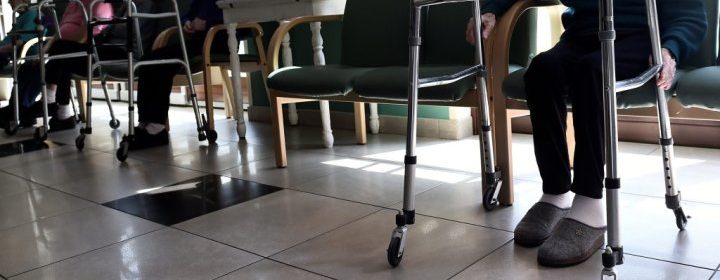Quebec sends ‘swat teams’ to control outbreaks of COVID-19 in 4 long-term care residences

Quebec is deploying what it is describing as “swat teams” to four long-term care homes in the province where there are significant COVID-19 outbreaks.
The emergency field teams are being sent to bring the outbreaks under control and eliminate the spread of the virus.
The proportion of infected residents in the four care homes, known as CHSLDs in Quebec, is between 32 and 76 per cent.
During a press conference addressing the province’s response to the novel coronavirus, Health Minister Christian Dubé said Thursday the situation was worrisome.
“I am not sleeping well these days. I am very preoccupied,” he said.
Despite the worry, however, Dubé said the situation now wasn’t on the scale as the pandemic’s first wave which ravaged long-term care homes across Quebec.
Dubé said that 50 days into the second wave there are around 320 people infected with COVID-19 in some 40 CHSLDs, compared to more than 2,700 people infected in about 100 care homes on the 50th day of the first wave.
[ Sign up for our Health IQ newsletter for the latest coronavirus updates ]
“Until now, we have succeeded, though not perfectly, in controlling the epidemic in CHSLDs,” he said.
Dubé said a prevention and infection-control (PCI) system was put in place in CHSLDs with a general manager appointed to each institution to ensure safety protocols are being followed.
“When cases arise, as we have had in our four CHSLDs in the past few days, we send additional intervention teams to try to control and then eliminate the contagion.”
The minister expressed hope the emergency teams would be able to quickly turn the situation around in the affected care homes located in the Eastern Townships, the Quebec City region, Saguenay-Lac-Saint-Jean and the Montérégie.
Dubé noted it wasn’t the first time the swat teams had been called upon during outbreaks — something he found encouraging.
“This summer, early July, mid-July, we had two large outbreaks in CHSLDs, in Saint-Jérôme and then in Saint-Eustache,” he said, pointing to an example of a successful intervention.
While it’s unclear what may have led to the outbreaks in the four care homes, Dubé indicated employee fatigue may have played a role.
“They’ve been living these two waves for seven months. Then it’s … I would say, it’s normal, I want to be careful, but it’s normal that they are tired,” he said, adding it can sometimes cause people to let their guard down.
“I want to tell them that we support them, and it’s not easy to always be on the lookout because the virus is sneaky,” he said.
The health ministry also indicated that other factors could be involved in these cases, for example, the dilapidated state of the establishments or staff shortages.
Dubé said an analysis was underway to understand what happened and find out if prevention protocols were properly followed.
He said ultimately that responsibility lies with the general manager of the CHSLD.
Dubé said he would have a clearer picture in the next few days of how the situation unfolded which would allow him to “see what can be done and if there actions that need to be taken.”
Source: Read Full Article